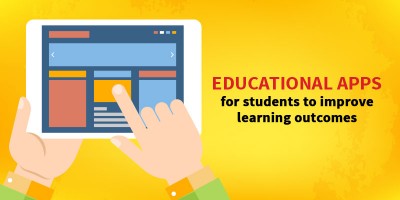State Board Commerce (XI-XII) - Test Papers
AIIMS MBBS – Important Dates for 2018
Get All Important Dates of AIIMS 2018 entrance exam dates below. AIIMS will conduct the entrance exam as a computer based test on Sunday, May 26 and 27, 2018. There will be two shifts on each day. All dates have been updated here.
|
Event |
Date |
|
Online application form submission |
5-Feb-18 |
|
Last date for form submission |
5-Mar-18 |
|
Application correction |
08 to 12 Mar 2018 |
| Status of Application |
20-Mar-18 |
|
Availability of downloadable admit cards from AIIMS website expected in |
10-May-18 |
| Exam Dates |
26, 27 May 2018 |
|
Result Date |
18-Jun-18 |
| First counselling for admission to AIIMS MBBS |
03, 04, 05, 06 Jul 2018 |
|
Second counselling for admission to AIIMS MBBS |
2-Aug-18 |
| Third counselling for admission to AIIMS MBBS |
4-Sep-18 |
| Open counselling for admission if required | 27-Sep-18 |
Application Fees
Application fee for AIIMS MBBS entrance exam 2018. The table contains fee amount of this year.
|
Category |
Fees |
|
General/ OBC |
Rs. 1500 |
|
Scheduled Caste (SC) |
Rs. 1200 |
| Scheduled Tribe (ST) |
Rs. 1200 |
|
OPH |
NIL |
AIIMS MBBS Eligibility Criteria 2018
Age limit – Candidate should have attained or will be 17 years old as on 31 December 2018. Those who are born on or after January 2, 2002 are not eligible to apply.
Educational qualification – Candidate should have passed class 12 exam under a recognized scheme of examination. Candidate should have studied Physics, Chemistry, Biology and English as subject and aggregate percentage for all these subjects should be at least 60% for general and OBC candidates, 50% for SC / ST / OPH candidates.
International Women’s Day and the Struggle for Equality
International Women’s Day is celebrated globally on 8th March every year. On this day, the social, economic, cultural and political achievements of women are remembered. Women, who are engaged in politics, business, education, inventions, entrepreneurship, and television, are usually felicitated on this day. This day also calls for an improvement in gender equality in today’s world.
International Women’s Day developed along with the activities of labor movements in North America at the end of the twentieth century. For the first time, it was celebrated all over Europe and North America. Since that time, the International Women’s Day has assumed a global dimension for women in developed and developing countries as well.
Great achievements mark women’s empowerment this year at the eve of International Women’s Day. We have female astronauts and Prime Ministers. Women can work and have a family, women have real choices. Each year the world inspires women and celebrates their achievements.
International Women’s Day is an official holiday in many countries including Afghanistan, Armenia, Azerbaijan, Belarus, Burkina Faso, Cambodia, China (for women only), Cuba, Georgia, Guinea-Bissau, Eritrea, Kazakhstan, Kyrgyzstan, Laos, Madagascar (for women only), Moldova, Mongolia, Montenegro, Nepal (for women only), Russia, Tajikistan, Turkmenistan, Uganda, Ukraine, Uzbekistan, Vietnam and Zambia.
A global web of rich and diverse local activity connects women from all around the world ranging from political, business, and government. Local activities including women’s craft markets, theatric performances, fashion parades and more are empowering women in their own way. Many global corporations actively support International Women’s Day by running their own events and campaigns.
Google changes their Google Doodle to commemorate women’s day. Other social media sites like Facebook and Twitter also promote International Women’s Day in their own ways.
The theme of International Women’s Day this year is “Think equal, build smart, innovate for change”. Last Year it was “Time is Now: Rural and Urban Activists Transforming Women’s Lives”.
What colors signify the International Women’s Day?
Purple is a color symbolizing women whereas the combination of purple, green and white symbolizes women’s equality. This originated from the Women’s Social and Political Union in the UK in 1908. Purple signifies justice and dignity and Green symbolizes hope while White color represents purity. Purple with green represents traditional feminism. Purple with yellow represents progressive contemporary feminism.
A brief history of International Women’s Day
The first National Woman’s Day was observed in the United States on 28 February when the Socialist Party of America designated this day in honor of the workers who went on strike in 1908. 15,000 women garment workers protested in New York City against their working conditions and demanded shorter hours, better pay and voting rights.
In 1910 the second International Conference of Working Women was organized in Copenhagen. More than 100 women participated from 17 countries. On that day, Clara Zetkin, who was the leader of the Social Democratic Party, proposed that the women’s day will be celebrated on 8th Mar every year in every country. Women’s Day was pronounced an International day to support women’s rights and equality.
The next year (1911) as per the Copenhagen initiative, International Women’s Day was marked for the first time (19 March) in Austria, Denmark, Germany, and Switzerland and there were more than one million women and men participated in the various rallies in these countries. They demanded women’s rights to work, to vocational training and an end to discrimination on the job.
Less than a week later on 25 March, the tragic ‘Triangle Fire’ in New York City took the lives of more than 140 working women. Most of them were Italian and Jewish immigrants. This tragic event drew attention to the bad working conditions in the United States. The ‘Bread and Roses’ Campaign also started this year.
The Growing Years of Women’s Day Campaign
International Women’s Day become a mechanism for protesting World War I in 1914. Women across Europe held rallies and also expressed women’s solidarity. There was a march in London from Bow to Trafalgar Square in support of Women’s suffrage on March 8, 1914.
Russian Protests
Russian women also observed their first International Women’s Day on the last Sunday in February of 1914 as part of the peace movement. In 1917 they went on strike for ‘Bread and Peace’ to protest the killing of Russian soldiers in the war. The Czar abdicated and the provisional Government granted women the right to vote.
Global Celebrations and United Nations
United Nations began celebrating International Women’s Day (IWD) on 8th March during International Women’s Year 1975. In December 1977, the General Assembly adopted a resolution proclaiming a United Nations Day for Women’s Rights and International Peace to be observed on any day of the year by the Member States, in accordance with their historical and national traditions.
In 1996 United Nations commenced the adoption of an annual theme, “Celebrating the past, Planning for the Future”. This theme was followed in 1997 with “Women at the Peace table” and in 1998 with “Women and Human Rights”, and in 1999 with “World Free of Violence Against Women”, and so on. Themes such as “Empower Rural Women, End Poverty & Hunger” and “A Promise is a Promise – Time for Action to End Violence Against Women” have also been included recently.
The New Millennium
The world moved on as the century changed and feminism wasn’t a popular topic. The International Women’s Day activity around the world had stalled in more countries. 2011 was the of the year of the completion of 100 years of International Women’s Day because a century ago the first International Women’s Day event had been held in 1911 in Austria, Denmark, Germany, and Switzerland. The then US President Barack Obama proclaimed the month of March as Women’s History Month. This was a reflection of the extraordinary tasks done by women in the past.
In the past, the world has witnessed a significant change and attitudinal shift in both women’s and society’s thoughts about women’s equality and emancipation. Many from a younger generation may feel that ‘all the battles have been won for women’ while many feminists from the 1970’s know only too well the longevity and ingrained complexity of patriarchy.
Educational Apps for Students to Improve Learning Outcomes
Educational apps for students have become very important in today’s day and age. A recent survey done by NCERT (National Council of Educational Research and Training) highlights that instead of learning outcomes becoming better, the averages are going down. In fact, in urban areas we are doing worse.
The National Achievement Survey
Recently the NCERT (National Council of Educational Research and Training) brought out The National Achievement Survey and the findings are not encouraging for Mumbai and Thane. The average performance in all subjects including maths and science has been found below students in districts like Ratnagiri, Sindhudurg and Beed which have a better performance average than the National mean. And we have always believed that students in Mumbai and Thane are always better-off educationally than other parts of Maharashtra – even India.
This survey also published in the Times of India (Mumbai fails to measure up to poorer districts in Maths, Science, Feb 24, 2018) evaluated learning levels of students of Classes III, V and VIII in mathematics, science, language, social studies and environmental studies. In Maharashtra, the survey covered over 2,200 government and government-aided schools, including many run by prestigious trusts and missionary groups. All come under the state board of education.
According to an expert interviewed by the esteemed newspaper the reasons for such dismal performance is the practice of rote learning and the lack of conceptual clarity. Also at the same time understanding of languages which is the medium of learning is low.
Why this scenario continues and what are we aiming for?
These reasons are not new and steps are being taken by state and central authorities to remedy this situation. However, the buzz word is learning outcome. This term although has been thrown around for quite some time has certainly gained prominence in the past few years and all stake holders are now taking it seriously. The HRD minister recently announced rationalizing the school syllabus. “The objective of education is to prepare a good human being,” he said.
The solution to the problem
The solution lies in technology. Technology has given us the power today to change the learning outcome. Our biggest concern is that our children do not get the attention they deserve at school. However, we also know that in the current scenario a teacher’s job is not only teaching, but also administrative work that comes along with the job. What we must understand is that if the teacher’s job includes presenting information to students in the classroom and taking care of all the paperwork then he or she will not be able to give time to solve doubts of students, let alone give personal attention to them. Learning outcome, in this scenario is the least of the concern.
Why Educational apps for students?
The magic of electronics is now apparent to us all. We know how information has become personalized. Enough studies on learning outcomes, student behavior and psychology have helped design many educational apps for students of all ages. Technology helps disseminate information easily and can make the information (lecture) interesting with illustration and animation. Students can engage with the videos rather than run away from it. It is a universal fact that information that is interesting has a higher chance of being retained in memory. At the same time videos can be watched anytime, anywhere and as many times a student wants.
The Flipped Classroom
Teachers can now give emphasis on solving doubts with students while recorded video lectures give out information and concepts. The flipped classroom teaching has been around for quite some time in Europe and America and has been found to be very effective. Students can watch lectures at home instead of doing homework or rather harassing their parents with the homework. When they are in school they can discuss any doubts that they had jotted down when they were watching the lectures. Classroom time can be used for assignments and clarifying doubts with the teachers.
Future of Possibilities
Once we allow technology to enter our classrooms, the possibilities of using it for personalized learning outcomes are endless. With educational apps for students, they can choose subjects that they would like to learn. Teachers will be saved from doing endless paperwork and concentrate on what they are qualified and hired for – teaching. And Parents will be saved from running after their children demanding them to finish their homework.
Watch Video Lectures with Interesting Animations
Maths Introduction and Section Wise Weightage for Class 10 ICSE Board Exam 2018
Watch How to tackle the Board Exams. Learn about the Paper Pattern – Different sections of the Paper, Marking Scheme, Time Management. Maths Exam Guidance Lecture and Exam Tips for Class 10 ICSE Board Exam 2018. Watch complete video in Robomate+ Study App.
Hindi Syllabus, Paper Pattern And Time Management for Class 10 ICSE Board Exam 2018
Watch How to tackle the Board Exams. Learn about the Paper Pattern – Different sections of the Paper, Marking Scheme, Time Management. Hindi Exam Guidance Lecture and Exam Tips for Class 10 ICSE Board Exam 2018. Watch complete video in Robomate+ Study App.
Economics Paper Pattern and Time management Tips for Class 10 ICSE Board Exam 2018
Watch How to tackle the Board Exams. Learn about the Paper Pattern – Different sections of the Paper, Marking Scheme, Time Management. Economics Exam Guidance Lecture and Exam Tips for Class 10 ICSE Board Exam 2018.Watch complete video in Robomate+ Study App.










